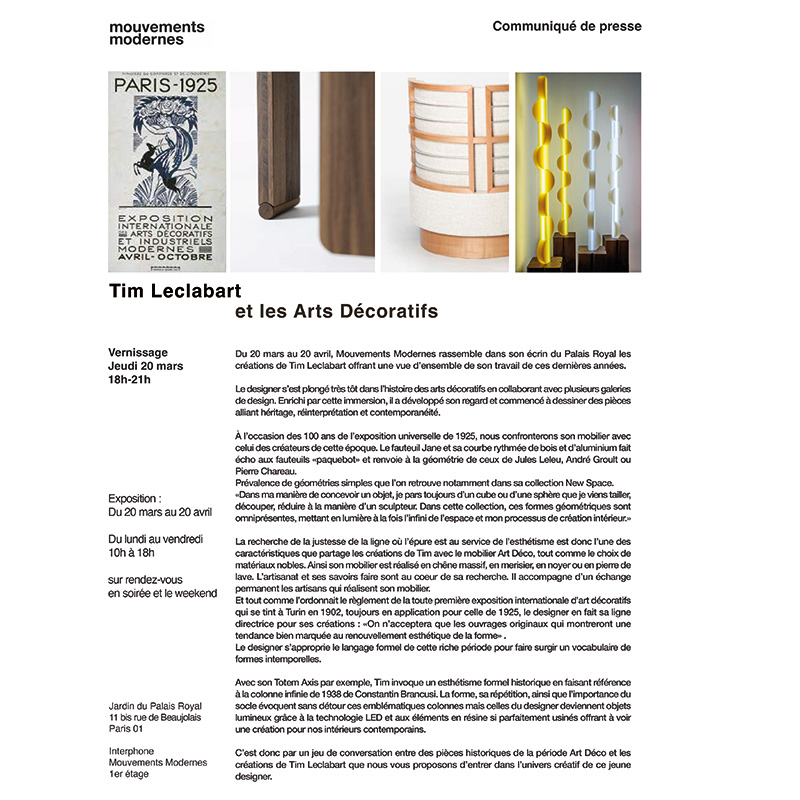Tim Leclabart and the Decoratives ArtsPalais Royal Paris
March 20 2025
- April 20 2025
|
Back |

From March 20th to April 20th, Mouvements Modernes will showcase Tim Leclabart's crea- tions at its Palais Royal location, presenting a comprehensive overview of his work from recent years.
The designer immersed himself early on in the history of the decorative arts, working with se- veral design galleries.Through this immersive experience, Leclabart has honed his design vi- sion, crafting pieces that seamlessly blend heritage, reinterpretation, and modernity.
In celebration of the 100th anniversary of the 1925 Universal Exhibition, his furniture will be displayed alongside historic pieces from that era. The Jane armchair, with its rhythmic curves of wood and aluminum, recalls the streamlined elegance of “paquebot” armchairs and echoes the geometric forms seen in the works of Jules Leleu, André Groult, and Pierre Chareau.
The prominence of simple geometries is especially apparent in his New Space collection: “When I design an object, I always start with a cube or a sphere, which I carve, cut, and refine like a sculptor. In this collection, these geometric shapes are ever-present, reflecting both the boundlessness of space and my inner creative process.”
Leclabart’s pursuit of perfect lines—where purity serves aesthetic purpose—is a defining fea- ture that connects his creations to Art Deco furniture. This is further emphasized by his choice of noble materials, including solid oak, cherry, walnut, and lava stone. His dedication to crafts- manship and traditional expertise lies at the core of his work.
In keeping with the principles established at the first International Exhibition of Decorative Arts in Turin in 1902—which continued to influence the 1925 exhibition—Leclabart follows this gui- ding principle: “Only original works demonstrating a clear commitment to aesthetic renewal will be acceped.” By drawing on the formal language of this rich period, Leclabart creates a vo- cabulary of timeless forms.
His Totem Axis, for example, pays tribute to historical formalism by referencing Constantin Brancusi's iconic 1938 “Infinite Column.” The repetition of form and the emphasis on the base evoke the spirit of these emblematic columns. Yet, Leclabart’s interpretation transforms them into luminous objects using LED technology and meticulously crafted resin elements, bringing this classic motif into contemporary interiors.
We invite you to explore the creative world of this talented young designer through a dialogue between historical Art Deco pieces and Tim Leclabart's innovative creations.

